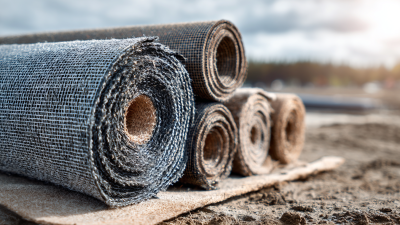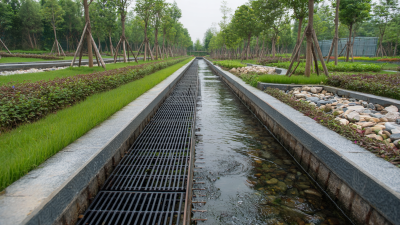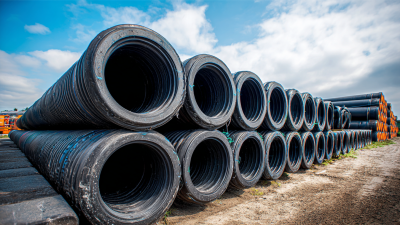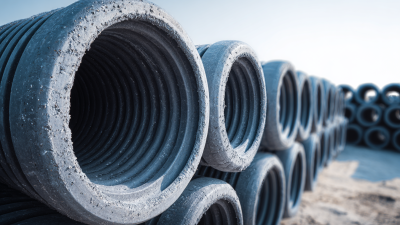Geotextiles have emerged as a pivotal component in sustainable construction practices, playing a crucial role in enhancing soil stability and addressing environmental challenges. According to a report by MarketsandMarkets, the global geotextiles market is projected to reach $12.5 billion by 2026, growing at a CAGR of 12.6% from 2021 to 2026. This surge in demand underscores the importance of geotextiles in various applications, including road construction, erosion control, and landfill management. By providing separation, filtration, drainage, and reinforcement, geotextiles significantly improve the longevity and performance of construction projects while minimizing ecological footprints.
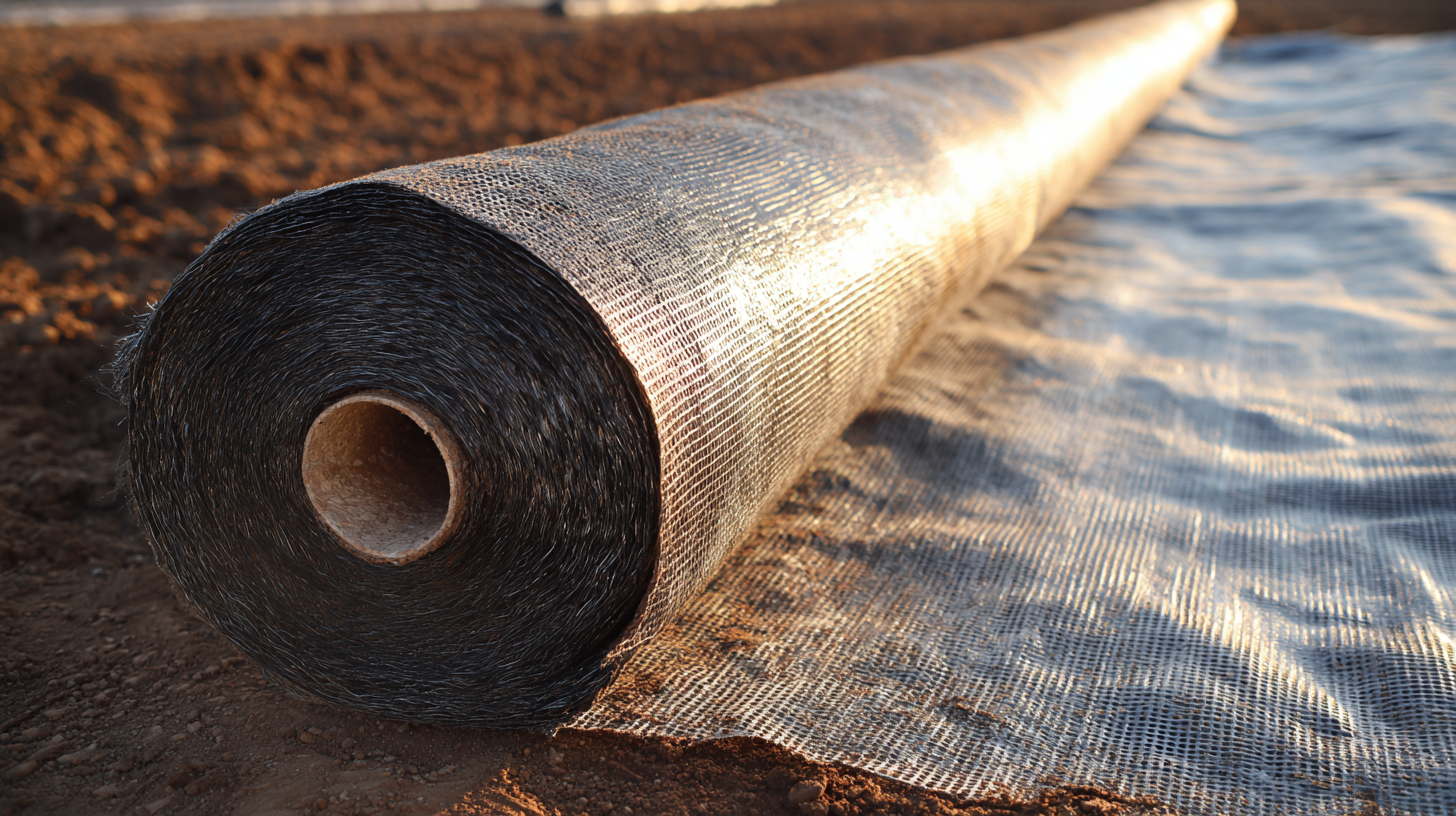
As the construction industry increasingly prioritizes sustainability, understanding the multifaceted benefits of geotextiles becomes essential for engineers and environmentalists alike, as evidenced by their ability to reduce soil erosion by up to 60% in certain applications, showcasing their integral role in promoting stable and responsible development.
Geotextiles have emerged as a vital component in promoting sustainability within construction projects. According to the International Geosynthetics Society, the global geosynthetics market is expected to grow substantially, driven by increasing awareness of sustainable practices. This growth is reflective of the construction industry's shift towards materials that not only enhance structural integrity but also minimize environmental impact. Geotextiles, made from synthetic or natural fibers, serve multiple functions including soil stabilization, erosion control, and drainage enhancement, all of which contribute to the longevity of structures while preserving natural landscapes.
The integration of geotextiles into construction practices can lead to significant economic benefits. A report from the Geosynthetic Research Institute indicates that using geotextiles can reduce the need for traditional materials like concrete and gravel, potentially cutting costs by up to 30%. Additionally, they facilitate quicker project timelines by allowing for immediate use of areas that would otherwise require extensive preparation. As a result, incorporating geotextiles not only aligns with sustainable development goals but also proves to be a cost-effective solution, making them an essential element in modern construction practices.

Geotextiles, as innovative materials in sustainable construction, play a crucial role in enhancing soil stability through various mechanisms. They primarily function by providing reinforcement to the soil, increasing its load-bearing capacity while reducing the risk of erosion. This is achieved through the combined effects of tension, friction, and interlocking that occur between the geotextile material and soil particles. When placed within the soil structure, geotextiles help distribute loads more evenly, thus mitigating localized failure and improving overall stability.
Another significant mechanism of soil stabilization through geotextile applications is their ability to control water movement within the soil. Geotextiles can act as filters, allowing water to pass through while retaining soil particles, which is essential for preventing sediment washout and maintaining the integrity of slopes and embankments. Additionally, they can facilitate drainage, reducing pore water pressure within the soil, which is vital in improving the soil's shear strength. As a result, these materials contribute to sustainable construction practices by minimizing the need for extensive excavation and the use of traditional stabilization methods, ultimately leading to more resilient infrastructure.
When selecting the appropriate type of geotextile for sustainable construction, it is essential to consider the specific application and the conditions of the project site. Geotextiles come in two primary forms: woven and non-woven. Woven geotextiles are typically used in applications requiring high strength and durability, such as separation and reinforcement layers in roadways and retaining structures. Their interwoven fibers provide excellent tensile strength and can efficiently distribute loads, which is crucial for maintaining soil stability in heavy traffic areas.
On the other hand, non-woven geotextiles are ideal for applications involving drainage and filtration. Their random fiber arrangement allows for superior water flow while preventing soil erosion and maintaining the integrity of the underlying soil. Selecting the right type can significantly impact soil stability, particularly in environmentally sensitive projects where ecological preservation is paramount. In conclusion, understanding the specific benefits and applications of each type of geotextile enables engineers and builders to make informed decisions that enhance sustainable construction practices and ensure robust soil support.

Geotextiles, a synthetic fabric used in civil engineering, play a significant role in enhancing the environmental sustainability of construction practices. By reinforcing soil structures, these materials contribute to improved stability, reducing the likelihood of erosion and degradation in natural landscapes. Their permeability allows for effective drainage, which mitigates the risk of waterlogging and preserves the integrity of surrounding ecosystems. As a result, geotextiles help maintain soil health while ensuring that construction activities have minimal environmental impact.
Moreover, the integration of geotextiles in project designs can lead to a reduction in resource consumption. By stabilizing soil and minimizing the need for extensive excavation or the application of concrete and other traditional materials, geotextiles can significantly lower carbon footprints. Their lightweight nature reduces transportation costs and energy usage, further promoting sustainable practices. The potential for geo-recycling and extended life cycles also underscores their role in sustainable civil engineering, making geotextiles a crucial component in developing environmentally friendly construction solutions.
| Dimension | Description | Environmental Benefits | Impact on Soil Stability |
|---|---|---|---|
| Water Management | Geotextiles help in managing water flow and drainage. | Reduced erosion and improved water quality. | Increases soil moisture retention and stability. |
| Soil Reinforcement | Enhances the bearing capacity of soil. | Minimizes the need for additional material use. | Helps prevent soil settling and deformation. |
| Erosion Control | Protects soil from wind and water erosion. | Reduces sediment runoff into water bodies. | Maintains soil structure and reduces landslide risk. |
| Sustainability | Supports sustainable construction methods. | Promotes the use of recycled materials. | Improves long-term viability of construction projects. |
Geotextiles have become a crucial component in sustainable construction practices, underscoring their significance in enhancing soil stability. Case studies reveal that their integration not only supports environmental sustainability but also bolsters structural integrity. For instance, a report by the Geosynthetic Research Institute indicates that the use of geotextiles can reduce soil erosion by over 75% in critical areas, promoting vegetation establishment and preserving topsoil. In projects such as the construction of green roads and eco-friendly embankments, geotextiles serve as filtration and drainage layers, facilitating effective water management while reinforcing the soil matrix.
In a landmark project in California, the use of geotextiles in a bioengineering approach for slope stabilization resulted in a 33% decrease in overall construction costs compared to traditional methods. The project demonstrated how geotextiles enabled quicker establishment of vegetation, leading to enhanced ecological function and site resiliency. Furthermore, a comprehensive analysis presented in the Journal of Sustainable Construction showed that incorporating geotextiles significantly improved the load-bearing capacity of subgrades, contributing to the durability of pavements and reducing maintenance needs. These successful integrations highlight the diverse applications and cost-effectiveness of geotextiles in promoting sustainability in construction.


